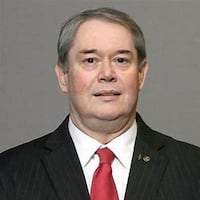The engineer’s estimate for the project was $13.8 million when the city opened bids on Sept. 20 after previously rejecting the bids last month. That delay also delayed plans to sell bonds for the project last month, to which its financial advisor warned a second delay could hurt future bond sales and the city would have to wait a year to proceed with the project.
The project includes the reconstruction of Main Street from First to Sixth streets including some work on the side streets; the replacement of water mains and storm sewers; lining the sanitary sewers; moving the overhead electric on Fourth Street underground; replacing curb, sidewalk, pavers, street lighting; removing the traffic signal at Fourth Street; modifying the traffic signal on Second Street; creating bump outs at the intersections; installing street trees, parking meters, furniture, installing a lighting structure and catenary lighting at Fourth Street. Council did eliminate a proposed mural at that location.
Franklin is in the midst of major downtown revitalization projects being done by the city along with a school building project already underway by the Franklin City School District. The new Franklin High School on East Sixth Street is expected to open after the first of the year.
City Manager Jonathan Westendorf told council that the project was rebid in hopes of lowering the costs closer to the engineer’s estimate and address a tight timeline with Duke Energy to put the electrical system underground.
Westendorf said Duke Energy expects to have the electric work completed by the end of the first quarter of 2024. He said there were some savings found by rebidding the project, but that the city would have to make up between $700,000 and $800,000 out of its reserves in addition to the city raising $12 million in bond revenue.
Councilman Paul Ruppert said, “I don’t think we can afford to delay.... investors don’t want us to stop and it could kill future development.
“I think we would have had a lot of regrets if we delayed a year,” Ruppert said.
Councilwoman Debbie Fouts agreed, saying “next year’s presidential election year could make things more volatile” for the economy and bond markets.
About the Author
